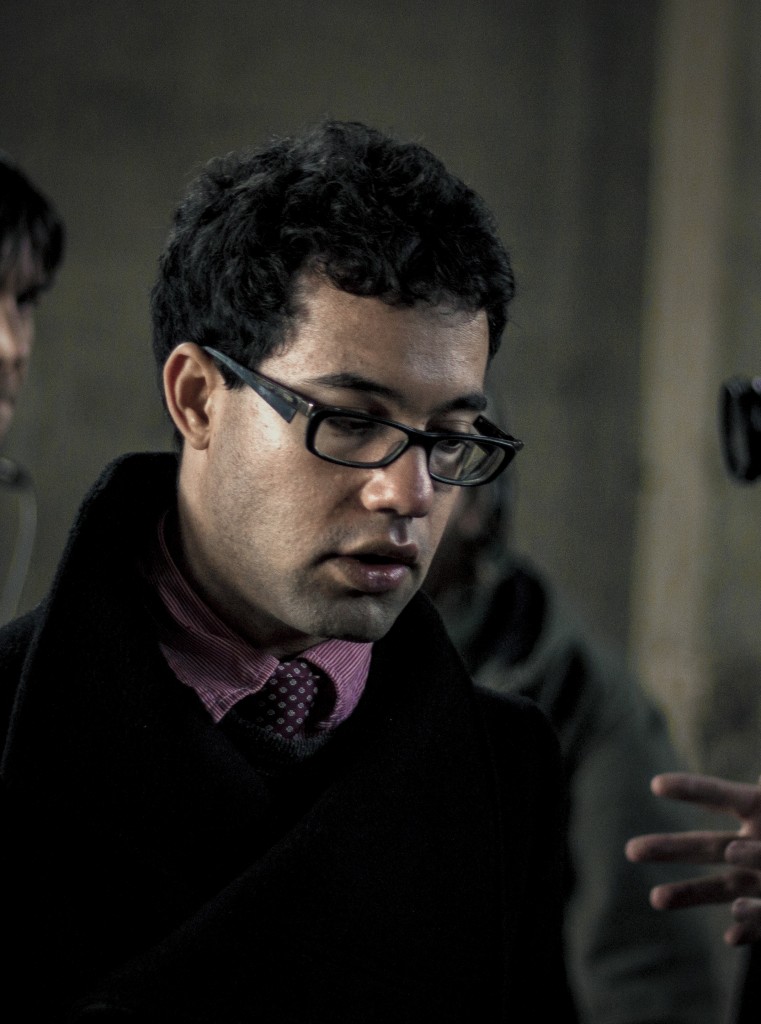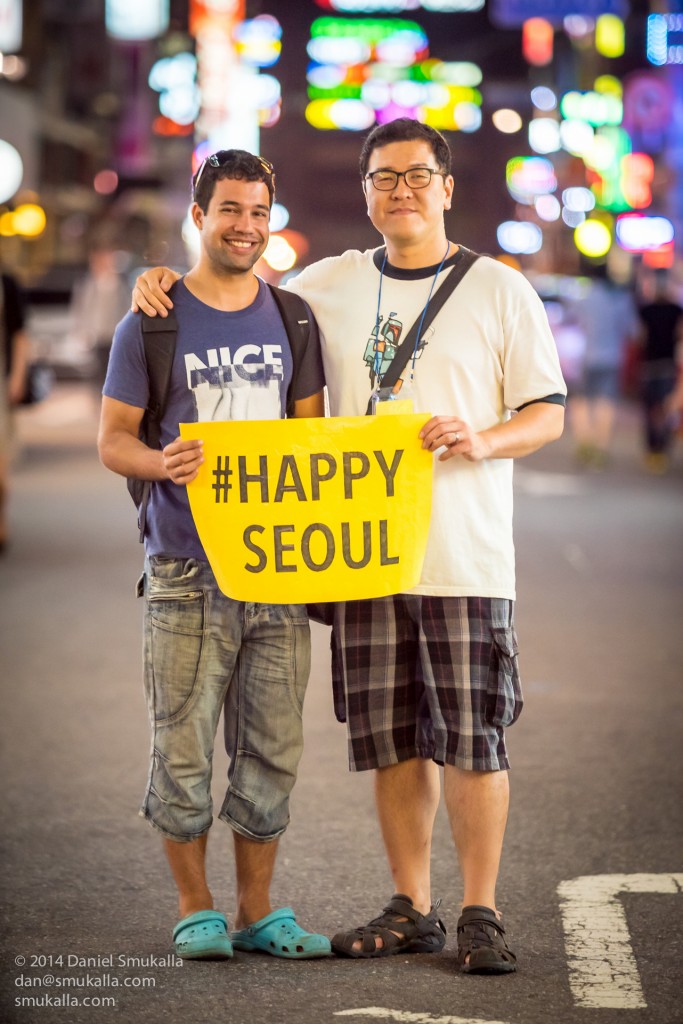- California Assembly OKs highest minimum wage in nation
- S. Korea unveils first graphic cigarette warnings
- US joins with South Korea, Japan in bid to deter North Korea
- LPGA golfer Chun In-gee finally back in action
- S. Korea won’t be top seed in final World Cup qualification round
- US men’s soccer misses 2nd straight Olympics
- US back on track in qualifying with 4-0 win over Guatemala
- High-intensity workout injuries spawn cottage industry
- CDC expands range of Zika mosquitoes into parts of Northeast
- Who knew? ‘The Walking Dead’ is helping families connect
South African filmmaker channels tragedy to spread happiness in Seoul
By Brian Han
When 25-year-old South African filmmaker Raoul Dyssell decided to make his “#HappySeoul” music video, the motivation came from a desire to inject some positivity into the South Korean community after so many months of darkness following an unforgettable tragedy.
“Seoul has been pretty miserable since the Sewol tragedy,” Dyssell said. “If somebody’s happy they won’t admit it. It’s almost a crime to express joy in public. I wanted to make this video so that people who are sad or thought that there was no real hope for a happy future could watch it and just smile. That’s it.”
As simple as his intentions were, the process proved to be much more complicated.
Dyssell released his first feature length film “Amiss” earlier this year and used it as a benchmark to compare his experience with “#HappySeoul.”
“You think making a movie is hard? Making this music video was the most physically and emotionally demanding project I’ve worked on,” he said. “You wouldn’t think so because it’s a happy video!”
Dyssell came up with the idea in the middle of winter. In order to achieve the warm summer feeling he envisioned, he opted to wait until August while he meticulously prepared for filming.
He spent time gathering a film crew, a choreographer, dancers and volunteers, while also trying to manage a budget of zero dollars.
“When I first decided to make the music video, I was broke,” Dyssell said. “I had just started my company and on top of that Amiss didn’t get distributed so I was absolutely miserable. The song just made me feel so good. Then I saw ‘Happy Capetown’ that a few of my buddies made and it showed me you can make a high production value ‘Happy’ video.”
Not only was the project a chance to show the rest of the world the value of hope in a country mired in sorrow, but this was also Dyssell’s love letter to a city he now calls home.
“I love living in Seoul more than living in South Africa,” he said. “I couldn’t ever see myself leaving.”
His affection and enthusiasm were infectious and soon enough, anticipation began to build among his crew and within the local community.
“I gave the people involved a sense of ownership over the project,” Dyssell said. “I spoke very passionately about the project, what it’s supposed to do and the potential to make Seoul citizens very happy… Oh! And I fed them really well!”
Hundreds of volunteers would show up in filming locations such as Seoul’s Hongdae Park based solely on word-of-mouth marketing tactics through Facebook. Dyssell was humbled by the turn out and was surprised to see support from all corners of Seoul.
“Even the police in Seoul are very friendly,” he said. “They’ll usually just ask us what’s going on, then stand back and let it happen. In Capetown [South Africa], police will come up and forcefully ask what we’re doing and for some reason, they always reach for their gun.”
Despite releasing the finished product more than a year after Grammy Award winning producer Pharrell debuted the original video for the song, “#HappySeoul” managed to exceed 100,000 YouTube views in less than a week. Additionally, it received an overwhelmingly positive reception.
“Many people who had watched the video told me that it made them tear up with joy,” Dyssell said.
Not only did the video emotionally resonate with a grieving public, but it also gave way to new opportunity.
“After the video received some notice, I started to get offers to do promotional videos for companies like Lotte,” Dyssell said.
He made it very clear that everyone involved with the project deserved the same amount of recognition, but there was one person in particular that was instrumental according to Dyssell.
“Allan Choi is a big reason that I have a lot of confidence,” he said. “When Allan told me that he was going to co-produce the music video with me, it was a huge relief. He was truly the backbone of the project. While I’d be directing, he would really hold everything else together behind the scenes.”
The two continue to look ahead and support each other as they jointly run their production company, Roll The Dice Pictures. They are already wrapping up new projects and are even planning career goals 10 to 15 years down the line.
As a young filmmaker, Dyssell seems to have a mature grasp on how to handle the difficulties that come with budgetary constraints and applies that understanding to his own artistic philosophy.
“You’re always going to have limitations,” he said. “You can either let those limitations define you or you can use them to your advantage and focus on the things you can control so that once you break out of those financial or skill based limitations you are already this highly skilled filmmaker.”
Expat artists like Dyssell are important contributors in a larger cultural movement that bridges the gap between South Korean and western cultures. Hopefully, his success along with that of other similar artists will help redefine the image of Seoul into a more positive one on a global scale.



















Lucy
October 23, 2014 at 8:52 PM
Awesome!!!
MeeYun
October 24, 2014 at 5:59 AM
Beautiful, optimistic idea~!
Pingback: South African filmmaker channels tragedy to spr...
pharrell
December 27, 2017 at 4:41 AM
Japan Trends – Nikkei Asian Review